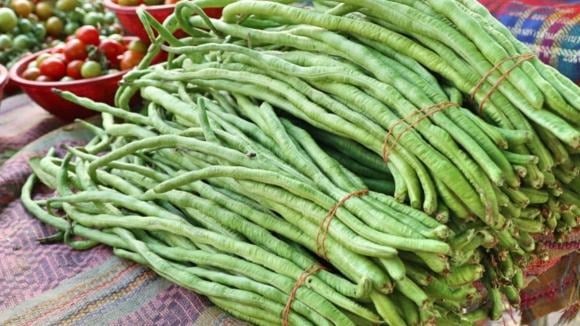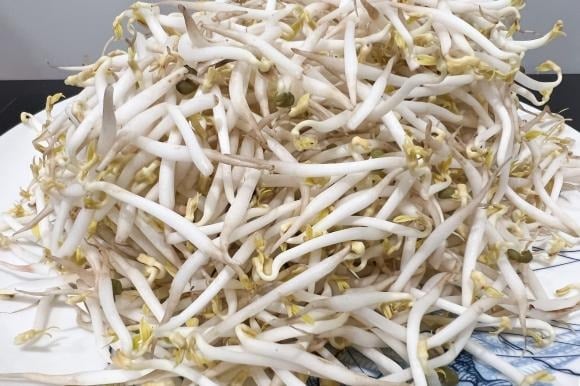Blanching vegetables is an essential step in removing any remaining bacteria, parasite eggs, and reducing harmful chemical residues. Accumulation of certain compounds can lead to kidney stones, abdominal pain, and even poisoning or increased cancer risk. Therefore, experts recommend blanching the following types of vegetables for better health:
1. Vegetables containing saponins
Saponins are natural compounds belonging to the group of glycosides, commonly found in legumes such as green beans, lentils, peas, and beans. They are particularly concentrated in the ends of the pods. While beneficial in some medicinal applications, saponins can also be toxic if not handled properly.
When ingested, saponins can react with stomach acids and bile, forming precipitates or gels that may irritate the digestive tract, leading to symptoms such as abdominal pain, nausea, and diarrhea. Additionally, saponins can disrupt red blood cell membranes, causing hemolysis, which may result in mild jaundice or anemia.
Fortunately, saponins are degraded when heated to high temperatures. Thus, it is recommended to blanch or thoroughly cook these types of vegetables to ensure safe consumption.

2. Vegetables with high levels of oxalic acid
Oxalic acid is a natural substance present in many vegetables. Once inside the body, it can bind to minerals like calcium and iron, reducing their absorption and leading to nutritional deficiencies. Notably, when oxalic acid combines with calcium, they form calcium oxalate, the primary component of kidney stones.
Vegetables with high oxalic acid content include spinach, beets, Swiss chard, bok choy, water spinach, bitter melon, and red beets. However, oxalic acid is water-soluble, and blanching is an effective way to remove 38% to 87% of this acid. Avoid over-blanching to preserve nutrients. For spinach, two minutes is the ideal blanching time to reduce oxalic acid while retaining essential nutrients.
3. Vegetables that are difficult to clean
Some vegetables, such as cauliflower, water spinach, lotus root, and watercress, have intricate structures with many crevices. They also tend to grow in environments like ponds and swamps, which are prone to bacterial contamination, including Listeria, Salmonella, and Campylobacter, as well as parasites such as worms and larvae.
Without proper handling, these pathogens can enter the body and cause food poisoning, parasitic infections, and digestive issues. Therefore, it is crucial to blanch these vegetables before further preparation.

4. Vegetables containing nitrites
Nitrites are commonly found in some vegetables and can transform into nitrosamines, compounds associated with an increased risk of stomach and colorectal cancer with prolonged consumption. A notable example is bean sprouts, where blanching significantly reduces nitrite content from 34.1 mg/kg to 4.4 mg/kg.
Additionally, vegetables stored overnight or for extended periods tend to have higher nitrite levels. It is advisable to consume fresh vegetables, avoid storing them for prolonged periods, and blanch them briefly before cooking to mitigate potential health risks.
The Man Who Discovered a Dangerous Illness: A Warning Against Common Eating Habits
“A routine check-up revealed a startling truth for this man. His kidney health was in jeopardy, and the doctor’s stern warning shed light on a common mistake. Unbeknownst to many, their dietary habits could be silently harming their kidneys. This story serves as a stark reminder that even the most subtle lifestyle choices can have significant consequences on our health.”






































